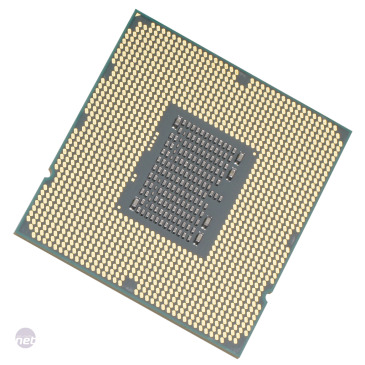Testing Methods
With the exception of HD Tach which we use to measure the performance of a motherboards SATA controllers, all of our benchmarks use real applications that give you a great idea of how well a product fares when performing the tasks you're likely to want it for.We test with our own Media Benchmarks suite which can be downloaded so you can test your own system. It uses a combination of Gimp image editing, H.264 encoding with Handbrake and multi-tasking with 7-zip file compression combined with HD video playback. Finally, for our game testing we benchmark the board running Crysis and record the minimum and average frame rates.
Our benchmarks include stable overclocked results too, so you can gauge how much performance potential there is in the motherboard, and how much value this adds to your purchase.
Test Setup:
Motherboards:
- EVGA X58 SLI Micro (Intel X58)
- Asus P6TD Deluxe (Intel X58)

- Asus P6X58D Premium (Intel X58)
- Asus Rampage III Extreme (Intel X58)
- Gigabyte GA-X58A-UD3R (Intel X58)
- Gigabyte GA-X58A-UD7 (Intel X58)
Common Components:
- Intel Core i7-980X Extreme Edition (32nm, 12MB L3 cache, 25x133MHz; 3.33GHz, Turbo Mode and Intel power saving states left at BIOS default settings)
- Stock: 4GB DDR3 1,600MHz C8 at motherboard SPD settings
- Graphics Testing: ATI Radeon HD 5870 1GB
- PC Power and Cooling Silencer 750W PSU
- Seagate 7200.11 1TB SATA hard drive
- Intel X25-M 80GB SSD
- Windows 7 Home Premium 64-bit
- ATI Catalyst 10.2 WHQL
Overclocked Settings:
- EVGA X58 SLI Micro - 3.52GHz, 160MHz QPI, 22x multiplier, 1,600MHz triple-channel DDR3 memory at 8-8-8-24-74-1T.
- Asus P6TD Deluxe - 4.4GHz, 200MHz QPI, 22x multiplier, 1,600MHz triple-channel DDR3 memory at 8-8-8-24-74-1T.
- Asus P6X58D Premium - 4.4GHz, 200MHz QPI, 22x multiplier, 1,600MHz triple-channel DDR3 memory at 8-8-8-24-74-1T.
- Asus Rampage III Extreme - 4.4GHz, 200MHz QPI, 22x multiplier, 1,600MHz triple-channel DDR3 memory at 8-8-8-24-74-1T.
- Gigabyte GA-X58A-UD3R - 4.4GHz, 200MHz QPI, 22x multiplier, 1,600MHz triple-channel DDR3 memory at 8-8-8-24-74-1T.
- Gigabyte GA-X58A-UD7 - 4.4GHz, 200MHz QPI, 22x multiplier, 1,600MHz triple-channel DDR3 memory at 8-8-8-24-74-1T.
Overclocking
The GA-X58A-UD7 is very easy to overclock, thanks to its user-friendly BIOS. To find the maximum stable QPI, we simply had to drop the CPU multiplier to 12x and set the voltages as follows; the vcore to 1.38125V, the QPI/VTT to 1.375V, the CPU PLL to 1.96V, the chipset to 1.3V and the Southbridge to 1.2V.When we entered the BIOS to overclock the X58 SLI Micro, we discovered more curious design decisions. For example, recovery mode is disabled by default. This means that unless you remember to enable recovery mode manually, you’ll have to reset the BIOS and enter all your changes again whenever you overclock the X58 SLI Micro too far. This is never an enjoyable experience, but it’s particularly bothersome on the X58 SLI Micro, as you can’t enter any of the voltages as absolute values – you have to scroll through a long list of voltages for each setting.
We also found that even though the BIOS identified our RAM’s latency timings correctly, the X58 SLI Micro wouldn’t POST when we raised the QPI above 133MHz. The only way to get around this problem is to set the timings by hand, something we haven't had to do on any non-EVGA motherboard.
Once we’d finally got to grips with the BIOS’s idiosyncrasies and lowered the CPU multiplier to 12x, we were shocked to find that the maximum stable QPI of the X58 SLI Micro was just 160MHz. This is only 27MHz higher than the stock frequency, and 60MHz lower than the best overclocking X58 motherboards. It’s quite frankly a travesty – not even the earliest LGA1366 motherboards with BETA BIOSes were this poor at overclocking. However, we’re clearly not alone – we noticed several posts on the EVGA support forum complaining about poor overclocking with the retail stepping of the Core i7-980X Extreme Edition CPU, so hopefully it’s something EVGA can improve in the future with BIOS updates.
We decided to run our overclocking tests with the CPU multiplier at 22x; combined with the tortoise-like QPI of 160MHz, this meant the CPU was still running at 3.52GHz, barely any faster than its out-of-the-box speed.

MSI MPG Velox 100R Chassis Review
October 14 2021 | 15:04









Want to comment? Please log in.